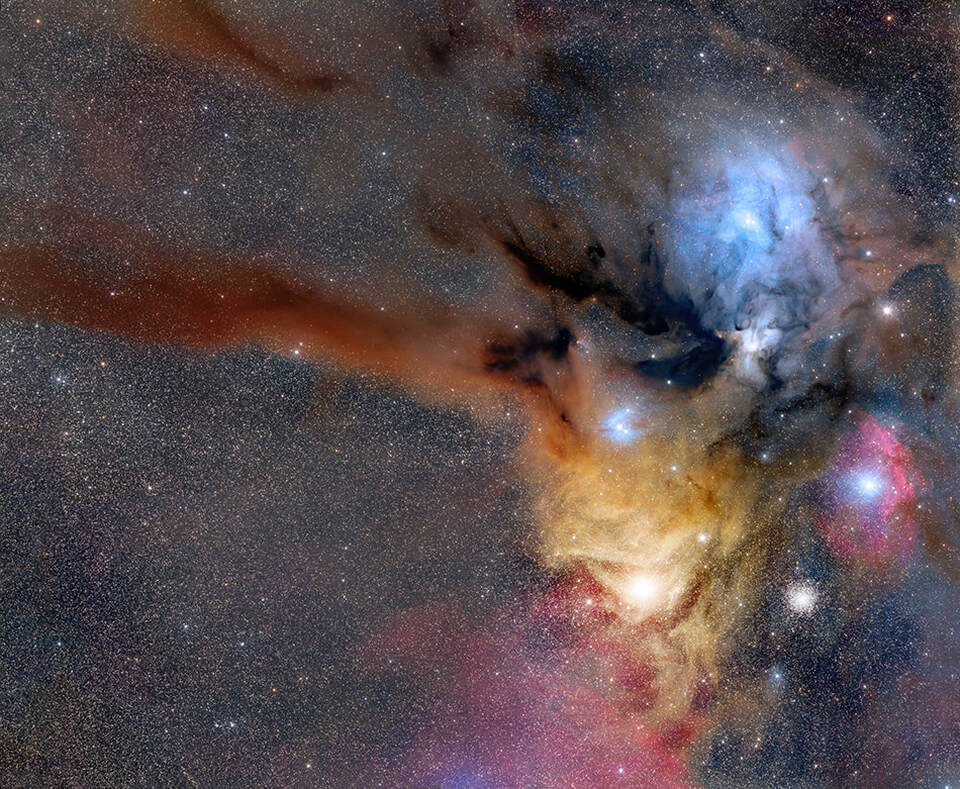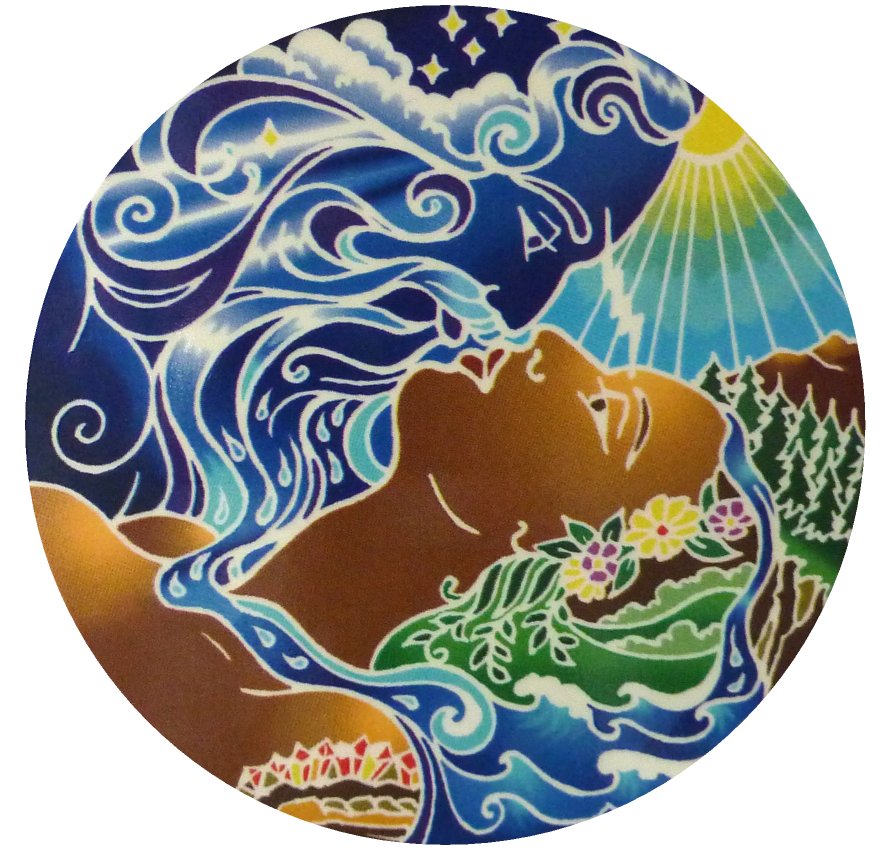Blog
Collin Walcott (April 24, 1945 – November 8, 1984) was an American musician who worked in jazz and world music.
Walcott was born in New York City on April 24, 1945. He studied violin and tympani in his youth, and was a percussion student at Indiana University. After graduating in 1966, he went to the University of California, Los Angeles, and studied sitar under Ravi Shankar and tabla under Alla Rakha.
According to critic Scott Yanow of Allmusic, Walcott was “one of the first sitar players to play jazz”. Walcott moved to New York and played “a blend of bop and oriental music with Tony Scott” in 1967–69. Around 1970 he joined the Paul Winter Consort and co-founded the band Oregon. These groups, along with the trio Codona, which was founded in 1978, combined “jazz improvisation and instrumentation with elements of a wide range of classical and ethnic music”.
Collin Walcott, a founding member of the ”world music” ensemble Oregon, died Thursday in a hospital in Magdeburg, East Germany, after a car crash. He was 39 years old. Mr. Walcott, who played the sitar and tabla in the group, was one of the few Western musicians to incorporate this type of instrument into an ensemble.
Nov 10, 1984 Mr. Walcott, who was born in New York City, studied at the Yale School of Music, majored in percussion at Indiana University and later studied ethnomusicology at the University of California at Los Angeles. He also studied sitar with Ravi Shankar and tabla with with Alla Rakha. As a classical percussionist, he performed with the Toronto, Detroit and Kalamazoo Symphony Orchestras. After playing with the Paul Winter Consort, in the late 60’s, he co- founded the quartet Oregon with Ralph Towner, Paul McCandless, and Glen Moore. They made 14 albums.
more...John Christopher Williams AO OBE (born 24 April 1941) is an Australian virtuosic classical guitarist renowned for his ensemble playing as well as his interpretation and promotion of the modern classical guitar repertoire. In 1973, he shared a Grammy Award in the Best Chamber Music Performancecategory with fellow guitarist Julian Bream for Together (released in the US as Julian and John (Works by Lawes, Carulli, Albéniz, Granados)).Guitar historian Graham Wade has said that “John is perhaps the most technically accomplished guitarist the world has seen.”
John Williams was born on 24 April 1941 in Melbourne, Australia, to an English father, Len Williams, who later founded the Spanish Guitar Centre in London, and Malaan (née Ah Ket), a daughter of Melbourne barrister William Ah Ket. In 1952, the family moved to England where he attended Friern Barnet Grammar School, London. Williams was initially taught guitar by his father, who was an accomplished guitarist. From the age of 11, Williams attended summer courses with Andrés Segovia at the Accademia Musicale Chigiana in Siena, Italy. Later, he attended the Royal College of Music in London, from 1956 to 1959, studying piano because the college did not have a guitar department at the time. Upon graduation, he was invited to create such a department. He took the opportunity and ran the department for its first two years. Williams has maintained links with the college (and with the Royal Northern College of Music in Manchester) ever since.
https://www.youtube.com/watch?v=EWWP1H7pUDw
more...Joe Henderson (April 24, 1937 – June 30, 2001) was an American jazz tenor saxophonist. In a career spanning more than four decades, Henderson played with many of the leading American players of his day and recorded for several prominent labels, including Blue Note, Milestone, and Verve.
Born in Lima, Ohio, Henderson was one of five sisters and nine brothers. He was encouraged by his parents Dennis and Irene (née Farley) and older brother James T. to study music. He dedicated his first album to them “for being so understanding and tolerant” during his formative years. Early musical interests included drums, piano, saxophone and composition. According to Kenny Dorham, two local piano teachers who went to school with Henderson’s brothers and sisters, Richard Patterson and Don Hurless, gave him a knowledge of the piano. He was particularly enamored of his brother’s record collection. It seems that a hometown drummer, John Jarette, advised Henderson to listen to musicians like Lester Young, Stan Getz, Dexter Gordon and Charlie Parker. He also liked Flip Phillips, Lee Konitz and the Jazz at the Philharmonic recordings. However, Parker became his greatest inspiration. His first approach to the saxophone was under the tutelage of Herbert Murphy in high school. In this period of time, he wrote several scores for the school band.
more...John Arnold Griffin III (April 24, 1928 – July 25, 2008) was an American jazz tenor saxophonist. Nicknamed “the Little Giant” for his short stature and forceful playing, Griffin’s career began in the early 1940s and continued until the month of his death. A pioneering figure in hard bop, Griffin recorded prolifically as a bandleader in addition to stints with pianist Thelonious Monk, drummer Art Blakey, in partnership with fellow tenor Eddie “Lockjaw” Davis and as a member of the Kenny Clarke/Francy Boland Big Band after he moved to Europe in the 1960s. In 1995, Griffin was awarded an Honorary Doctorate of Music from Berklee College of Music.
Griffin studied music at DuSable High School in Chicago under Walter Dyett, starting out on clarinet before moving on to oboe and then alto sax. While still at high school at the age of 15, Griffin was playing with T-Bone Walker in a band led by Walker’s brother.
Alto saxophone was still his instrument of choice when he joined Lionel Hampton‘s big band three days after his high school graduation, but Hampton encouraged him to take up the tenor, playing alongside Arnett Cobb. He first appeared on a Los Angeles recording with Hampton’s band in 1945 at the age of 17.
more...NGC 6914 is a reflection nebula located at approximately 6,000 light-years away in the constellation of Cygnus, and was discovered by Édouard Stephan on August 29, 1881. Ultraviolet radiation from stars in the Cygnus OB2 association ionize the nebula’s hydrogen.

Vernice “Bunky” Green (born April 23, 1935) is an American jazz alto saxophonist and educator. Green was raised in Milwaukee, Wisconsin, where he played the alto saxophone, mainly at a local club called “The Brass Rail”. His first big break came when he was hired in New York City by Charles Mingus as a replacement for Jackie McLean in the 1960s. His brief stint with the eccentric bass player made a deep impression. Mingus’ sparing use of notation and his belief that there was no such thing as a wrong note had a lasting influence on Green’s own style.
The next year, Green moved to Chicago, Illinois, where he appeared with several prominent players including Sonny Stitt, Louie Bellson, Andrew Hill, Yusef Lateef, and Ira Sullivan. Originally strongly influenced by Charlie Parker, Green spent a period reassessing his style and studying, emerging with a highly distinctive sound that has deeply influenced a number of younger saxophonists, including Steve Coleman and Greg Osby.
more...harles Edward “Cow Cow” Davenport (April 23, 1894 – December 3, 1955) was an American boogie-woogie and piano blues player as well as a vaudeville entertainer. He also played the organ and sang. Davenport, who also made recordings under the pseudonyms of Bat The Humming Bird, George Hamilton and The Georgia Grinder, is a member of the Alabama Music Hall of Fame.
He was born in Anniston, Alabama, United States, one of eight children. Davenport started playing the piano at age 12. His father objected strongly to his musical aspirations and sent him to a theological seminary, where he was expelled for playing ragtime.
Davenport’s career began in the 1920s when he joined Banhoof’s Traveling Carnival, a medicine show. His first fame came as accompanist to blues musicians Dora Carr and Ivy Smith. Davenport and Carr performed as a vaudeville act as “Davenport & Co”, and he performed with Smith as the “Chicago Steppers”. He also performed with Tampa Red. Davenport recorded for many record labels, and was a talent scout and artist for Vocalion Records. Davenport suffered a stroke in 1938 and lost movement in his hands. He was washing dishes when he was found by the jazzpianist Art Hodes. Hodes assisted in his rehabilitation and helped him find new recording contracts.
more...
Zapateado is a style of dance and traditional music of Andalusian origins in metre 6
8, with lively movement, marked on two beats, the second being very stressed. The dance shows a gracious tapping. Humanists of 16th century affirmed that zapateado derived from the lactisma of the Roman dancers in times of the Empire.
Among the composers who write Spanish Zapateados is Paco de Lucía, whose Percusión Flamenca is a very popular piece for guitar and orchestra. Pablo de Sarasate composed a Zapateado for violin and piano as part of his Spanish Dances, Op. 23. The piece is replete with harmonics, double stops, left hand pizzicatos, and is often performed by young virtuosos.
more...Rho Ophiuchi (ρ Ophiuchi) is a multiple star system in the constellation Ophiuchus. The central system has an apparent magnitude of 4.63. Based on the central system’s parallax of 9.03 mas, it is located about 360 light-years (110 parsecs) away. The other stars in the system are slightly farther away.
The central pair is known as Rho Ophiuchi AB. It consists of at least two blue-colored subgiants or main-sequence stars, designated Rho Ophiuchi A and B, respectively. Rho Ophiuchi AB is a visual binary, and the sky-projected distance between the two stars appears to be 3.1″, corresponding to a separation of at least 344 astronomical units (au).

Harvey William Mason (born February 22, 1947) is an American jazz drummer, record producer, and member of the band Fourplay. Mason grew up in Atlantic City, New Jersey and attended Atlantic City High School.
Mason endorses Canopus drums, Murat Diril cymbals, Remo drumheads, DW pedals, and Vic Firth drumsticks. Mason has his own Vic Firth Harvey Mason signature drumstick and Vic Firth Harvey Mason Chameleon signature drumstick.
https://www.youtube.com/watch?v=SvXxuyEU-0s
more...Paul Laurence Dunbar Chambers Jr. (April 22, 1935 – January 4, 1969) was a jazz double bassist. A fixture of rhythm sections during the 1950s and 1960s, his importance in the development of jazz bass can be measured not only by the extent of his work in this short period, but also by his impeccable timekeeping and virtuosic improvisations. He was also known for his bowed solos. Chambers recorded about a dozen albums as a leader or co-leader, and as a sideman, especially as the anchor of trumpeter Miles Davis‘s “first great quintet” (1955–63) and with pianist Wynton Kelly(1963–68).
Born in Pittsburgh, Pennsylvania on April 22, 1935, to Paul Lawrence Chambers and Margaret Echos. He was brought up in Detroit, Michigan following the death of his mother. He began playing music with several of his schoolmates on the baritone horn. Later he took up the tuba. “I got along pretty well, but it’s quite a job to carry it around in those long parades, and I didn’t like the instrument that much”.
more...
Joe Cuba (April 22, 1931 – February 15, 2009), was an American conga drummer of Puerto Rican descent widely regarded as the “Father of Latin Boogaloo“.
Cuba (birth name: Gilberto Miguel Calderón Cardona) was born in New York City, Cuba’s parents moved from Puerto Rico to New York City in the late 1920s and settled in Spanish Harlem, a Latino community located in Manhattan. Cuba was raised in an apartment building where his father had become the owner of a candy store located on the ground floor (street level floor). His father had organized a stickball club called the Young Devils. Stickball was the main sport activity of the neighborhood. After Cuba broke a leg he took up playing the conga and continued to practice with the conga between school and his free time. Eventually, he graduated from high school and joined a band.
In 1950, when he was 19 years old, he played for Joe Panama and also for a group called La Alfarona X. The group soon disbanded and Cuba enrolled in college to study law. While at college he attended a concert in which Tito Puente performed “Abaniquito“. He went up to Tito and introduced himself as a student and fan and soon they developed what was to become a lifetime friendship. This event motivated Cuba to organize his own band. In 1954, his agent recommended that he change the band’s name from the José Calderón Sextet to the Joe Cuba Sextet and the newly named Joe Cuba Sextet made their debut at the Stardust Ballroom.
more...Charles Mingus Jr. (April 22, 1922 – January 5, 1979) was an American jazz double bassist, pianist, composer and bandleader. A major proponent of collective improvisation, he is considered to be one of the greatest jazz musicians and composers in history, with a career spanning three decades and collaborations with other jazz legends such as Louis Armstrong, Duke Ellington, Charlie Parker, Dizzy Gillespie, Dannie Richmond, and Herbie Hancock.
Mingus’s compositions continue to be played by contemporary musicians ranging from the repertory bands Mingus Big Band, Mingus Dynasty, and Mingus Orchestra, to the high school students who play the charts and compete in the Charles Mingus High School Competition. In 1993, the Library of Congress acquired Mingus’s collected papers—including scores, sound recordings, correspondence and photos—in what they described as “the most important acquisition of a manuscript collection relating to jazz in the Library’s history”. Charles Mingus was born in Nogales, Arizona. His father, Charles Mingus Sr., was a sergeant in the U.S. Army. Mingus was largely raised in the Watts area of Los Angeles. His maternal grandfather was a Chinese British subject from Hong Kong, and his maternal grandmother was an African-American from the southern United States. Mingus was the third great-grandson of the family’s founding patriarch who was, by most accounts, a German immigrant. His ancestors included German American, African American, and Native American.
more...
More Posts
- Pee Wee Crayton Day
- World Music with Waldjinah
- Daily Roots with Levern, Royell & Barry
- The Cosmos with M31
- Paul Butterfield Day
- James Booker Day
- Sonny Red Day
- World Music with Anda Union
- Daily Roots with Forest Man
- The Cosmos with NGC 3372
- Robin Ford Day
- John Abercrombie Day
- Johnny Hammond Smith Day
- World Music with the Pink Martini Orchestra
- Daily Roots with the Meditations
- The Cosmos with M78
- Eddie Palmieri Day
- Dannie Richmond Day
- Cutis Fuller Day
- World Music with Magzoub Unssa
